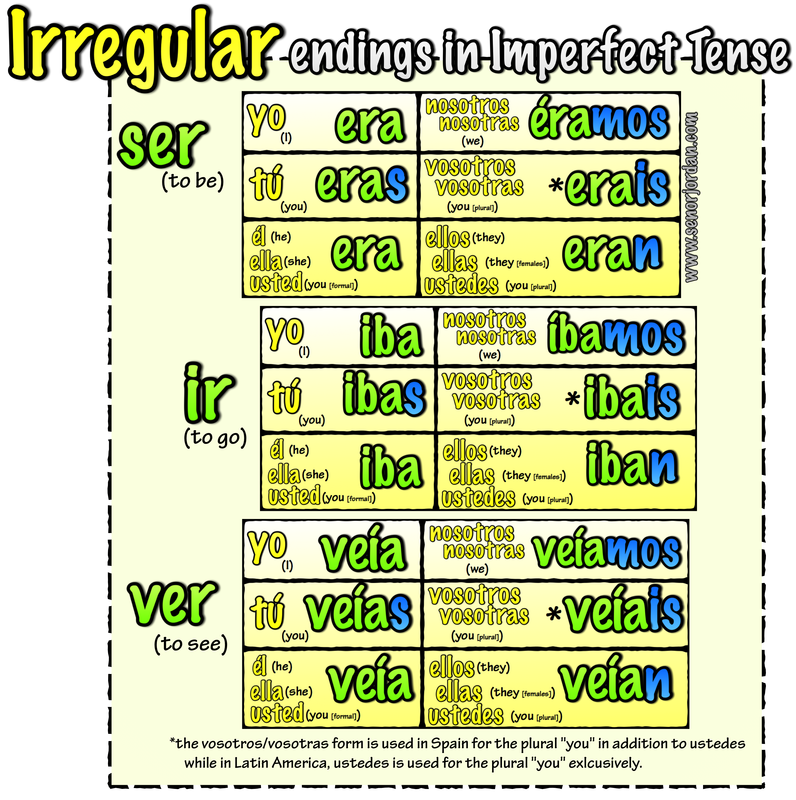

When said out loud these verbs sound like regular verbs, and the irregularity in spelling is there in order to preserve the sound. The preterite yo form for these verbs is as follows:Īs you can see, -car becomes -qué, -gar becomes gué, -zar becomes cé. If you know Spanish formal commands, then these irregulars will look familiar. Verbs ending in -car, -gar, and -zar are irregular in the yo form only, otherwise, they follow the usual regular endings. Fui could mean “I was” or “I went”! You will know which verb is being used through context, as fui al supermercado obviously means “I went to the supermarket” not “I was to the supermarket.” Below is the conjugation.

SER and IRįor some reason ser and ir are totally irregular and look exactly the same in the preterite tense. There are quite a few irregulars, and many are commonly used verbs, but here they are broken down into easy-to-study groups so you can learn them a few at a time. It is important to note that just because a verb is irregular in the present does not mean that it is irregular in the preterite. Irregular Verbs In Spanish Preterite Tense Here are some examples of regular -er and -ir preterite conjugations: Just remember that -er and -ir are the same and that all of these endings start with the letter I. Since -er and -ir verbs have the same preterite endings there is less to study! However, a common mistake made by beginners is to make up a new -er ending and say comemos instead of comimos. My friend listened to music at the concert. Last week we spent a lot of money at the store. La semana pasada gastamos mucho dinero en la tienda. Here are some examples of regular -ar preterite conjugations: It is important to use these accent marks because hablo means “I speak” while habló means “he/she/you formal speak.”Īlso, the nosotros form has the exact same ending as the present tense, so when you see a verb like cocinamos it could mean “we cook” or “we cooked.” Context will show whether it is referring to the past or the present! Note the accent marks in the yo and él/ella/usted endings. Below are the regular preterite endings for each pronoun. Much like the present tense, to conjugate in the preterite simply remove the infinitive verb ending ( -ar, -er, -ir ) then attach the appropriate ending to the remaining root. Master the Spanish Definite and Indefinite Articles in 10 Min.

Body Parts in Spanish: Vocabulary, Grammar and More!.Possessive Pronouns in Spanish - A Complete Guide with Examples.

#Past tense spanish free#
Feel free to skip around and practice using the Lingodeer app!
#Past tense spanish how to#
Here you will learn everything about the Spanish preterite tense how to conjugate regular verbs, which verbs are irregular, how to conjugate all of the irregular verbs, and when it is appropriate to use the preterite tense versus other tenses. The Spanish preterite tense is used to talk about completed past actions, and once learned will allow you to talk about when you went on that school trip a few years ago, a funny travel story about a guy who tried to take a monkey through security at the airport, or just what you did yesterday. Either way, welcome! Unsplash Credit to Julian Hochgesang Or perhaps you simply want to be able to say a few things in Spanish using the past tense and have stumbled upon the preterite tense without really knowing what it is. If you are reading this article, you are likely competent in the present tense in Spanish and are looking to advance to the next level by learning to talk about the past.


 0 kommentar(er)
0 kommentar(er)
